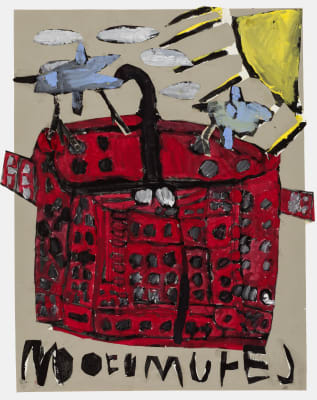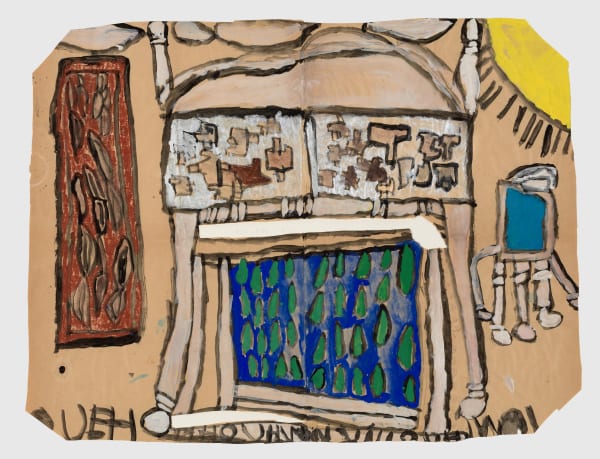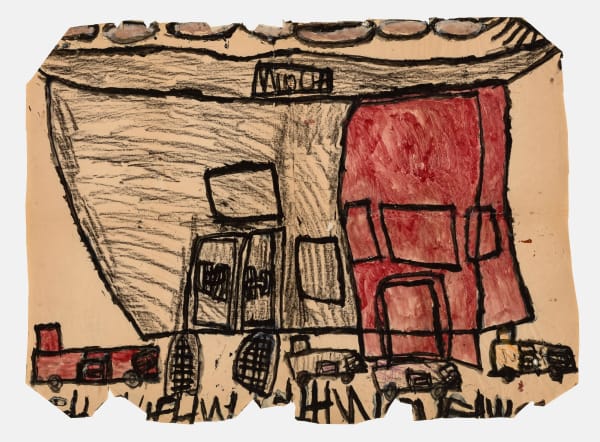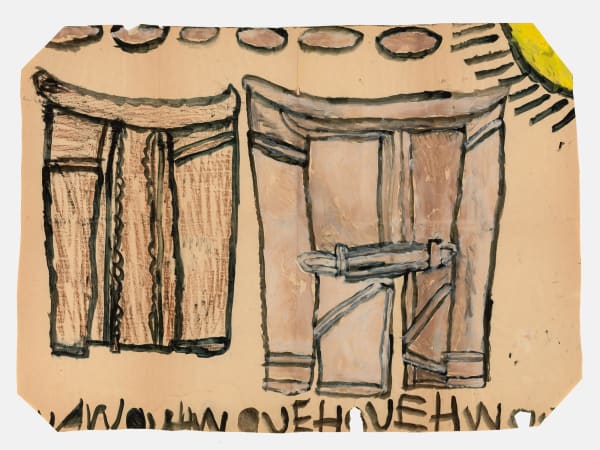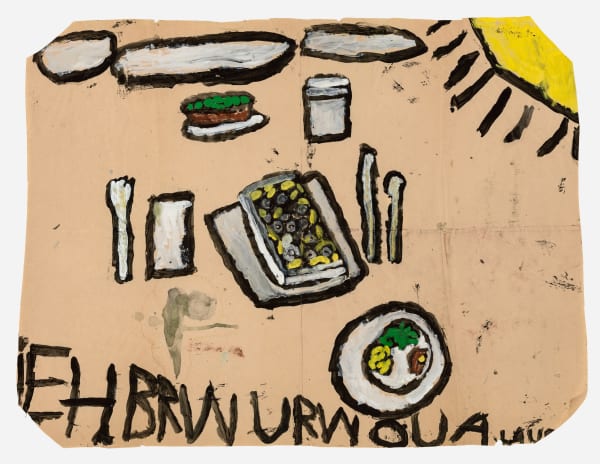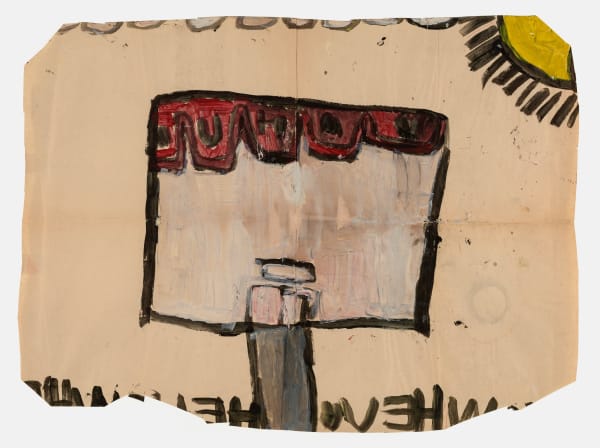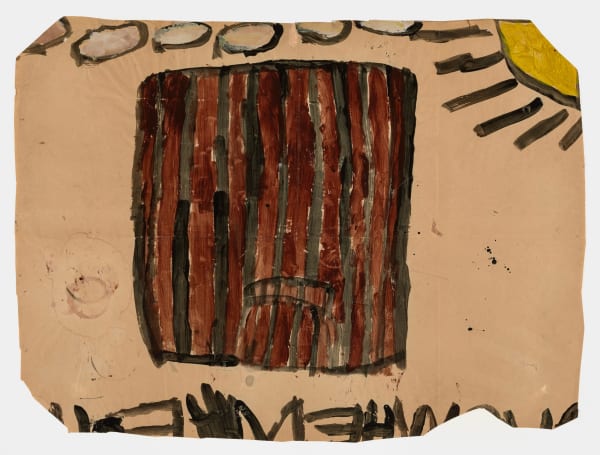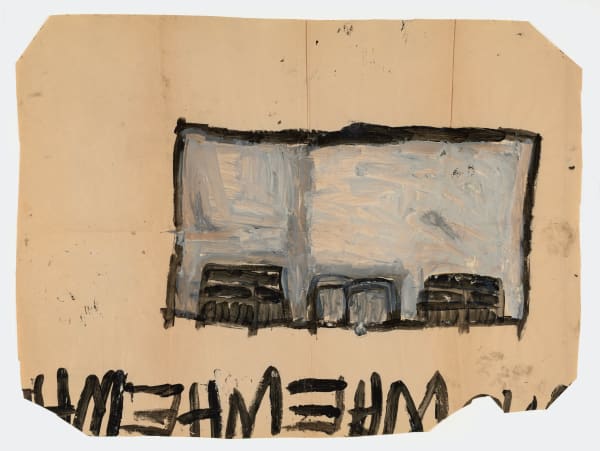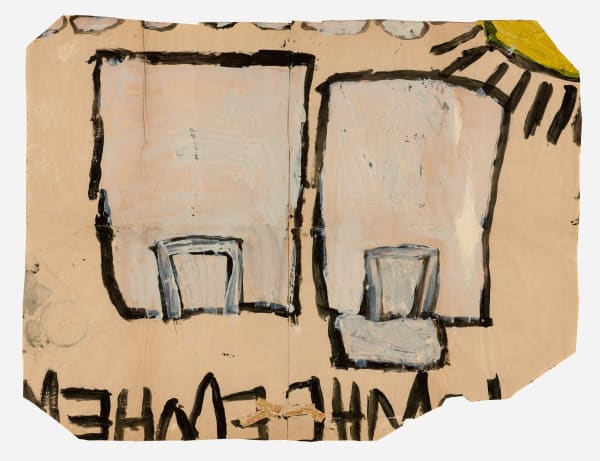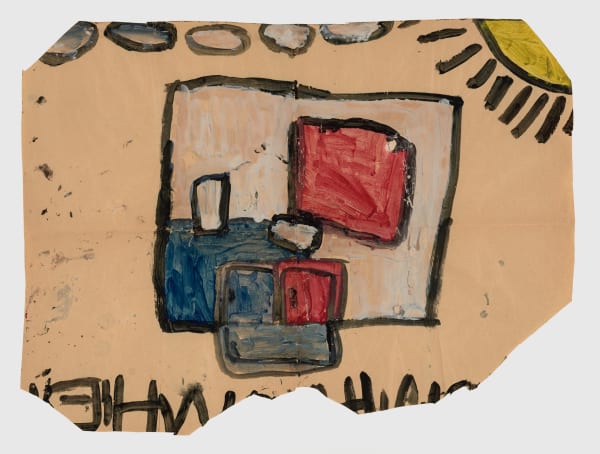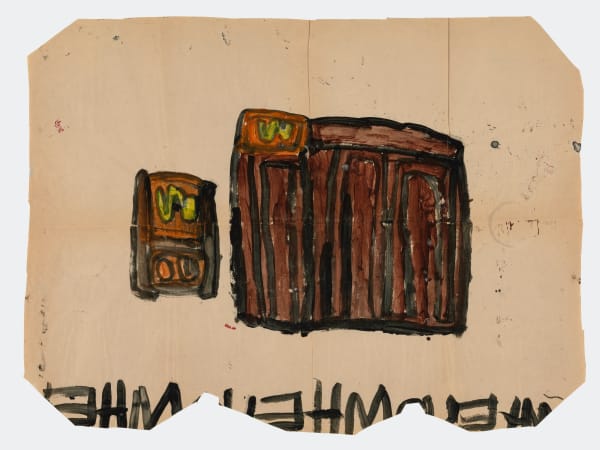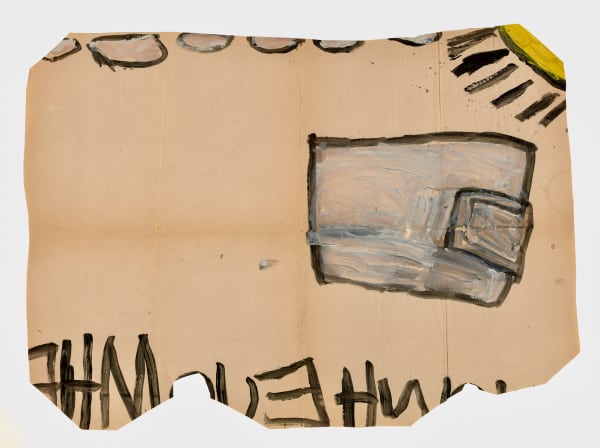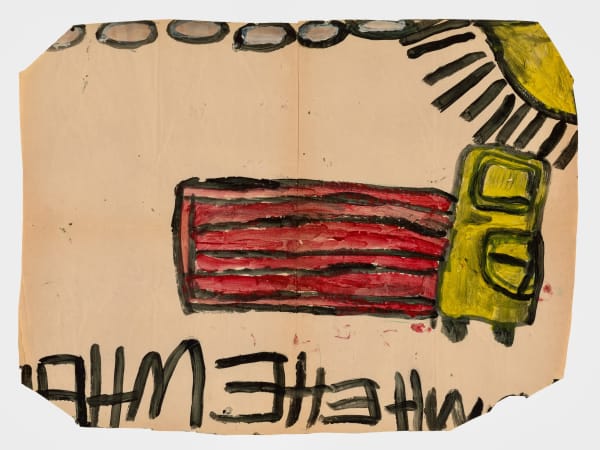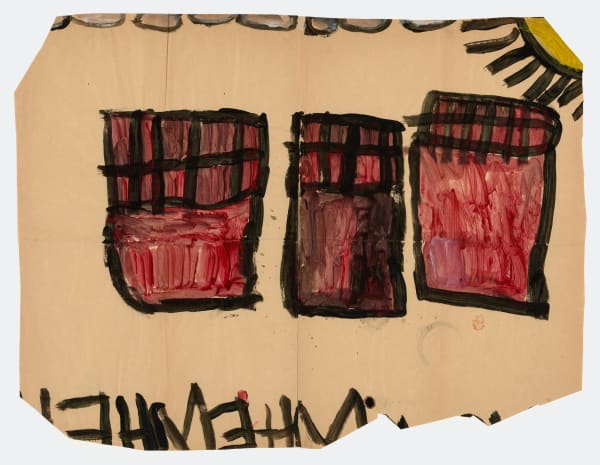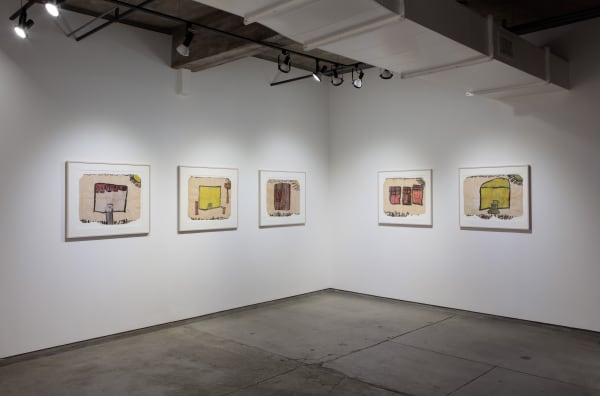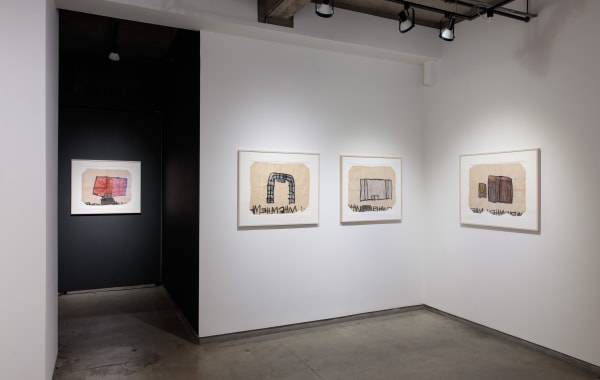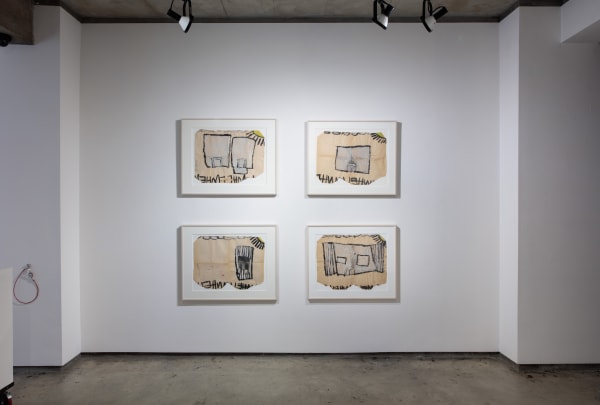Laura Craig McNellis:
"Here Comes the Sun"
January 11 - 31, 2021
Laura Craig McNellis was born in Nashville, Tennessee, in 1957. As the youngest of four sisters. McNellis’s developmental disability became apparent early in her life, but despite some social pressure to institutionalize her, the artist was raised and mostly schooled at home. McNellis greatly enjoyed painting from a very young age and did so regularly, using tempera on blank newsprint as her medium—for several years, her father brought home stacks of blank newsprint to keep up with the volume of her production. She still works only on this surface and has rejected any offers of canvas or better quality paper.
Because McNellis is non-literate and her speech understood only by family members, her paintings have become an extraordinary means of personal expression. Often a painting portrays an episode from her day and sometimes a series of works will develop from a particular event that fascinated her. Her acute powers of observation enable her to depict eloquently the people, objects, and events she encounters. Her art makes it clear that the artist sees a different, though in no way diminished, world.
McNellis has always painted late at night, frequently after everyone else is asleep. She employs bold, rapid brushstrokes and the wall near her desk is splattered with the byproducts of this technique. She often draws the outline first with a color felt marker or a felt-tip pen, then makes the works come alive using inexpensive watercolor sets and tempera paint.
When a painting is complete, McNellis writes large letters across the bottom margin—sometimes cutting out the interiors of the “Os.” These cut-out portions are occasionally part of the central picture. She generally trims each of the corners of a painting, but is careful to preserve a fragment of the brightly-rayed yellow sun that almost invariably appears in the upper-right corner. Another recurring image in McNellis’s work is the small fluffy clouds that line the top edge of each painting. When a piece is complete, McNellis folds it into quarters and stores it. She is quick about archiving, and has put many paintings away while still wet; McNellis appears to be less concerned about the fate of a finished picture than with the planning of her next.
-
-
 Untitled, 1972-1980Tempera on paper21 x 28.5 in (53.3 x 72.4 cm)(LM 409)SOLD
Untitled, 1972-1980Tempera on paper21 x 28.5 in (53.3 x 72.4 cm)(LM 409)SOLD -
 Untitled, 1972-1980Tempera on paper22 x 28 in. (55.9 x 71.1 cm)(LM 159)SOLD
Untitled, 1972-1980Tempera on paper22 x 28 in. (55.9 x 71.1 cm)(LM 159)SOLD -
 Untitled, 1972-1980Tempera on paper21 x 28.5 in (53.3 x 72.4 cm)(LM 187)
Untitled, 1972-1980Tempera on paper21 x 28.5 in (53.3 x 72.4 cm)(LM 187) -
 Untitled, (No. 3), 1972-1980Tempera on paper22 x 28 in. (55.9 x 71.1 cm)(LM 4)SOLD
Untitled, (No. 3), 1972-1980Tempera on paper22 x 28 in. (55.9 x 71.1 cm)(LM 4)SOLD
-
 Untitled (No. 13), 1972-1980Tempera on paper21 x 28.5 in (53.3 x 72.4 cm)(LM 103)SOLD
Untitled (No. 13), 1972-1980Tempera on paper21 x 28.5 in (53.3 x 72.4 cm)(LM 103)SOLD -
 Untitled (No.16), 1972-1980Tempera on paper21 x 28 in (53.3 x 71.1 cm)(LM 128)
Untitled (No.16), 1972-1980Tempera on paper21 x 28 in (53.3 x 71.1 cm)(LM 128) -
 Untitled, (No. 4), 1972-1980Tempera on paper20.5 x 27.5 in (52.1 x 69.9 cm)(LM 5)
Untitled, (No. 4), 1972-1980Tempera on paper20.5 x 27.5 in (52.1 x 69.9 cm)(LM 5) -
 Untitled (No.14), 1972-1980Tempera on paper21 x 28 in (53.3 x 71.1 cm)(LM 125)
Untitled (No.14), 1972-1980Tempera on paper21 x 28 in (53.3 x 71.1 cm)(LM 125)
-
 Untitled (No.18), 1972-1980Tempera on paper21 x 28 in (53.3 x 71.1 cm)(LM 158)
Untitled (No.18), 1972-1980Tempera on paper21 x 28 in (53.3 x 71.1 cm)(LM 158) -
 Untitled, 1972-1980Tempera on paper20.25 x 27.5 in (51.4 x 69.8 cm)(LM 64)
Untitled, 1972-1980Tempera on paper20.25 x 27.5 in (51.4 x 69.8 cm)(LM 64) -
 Untitled (No.20), 1972-1980Tempera on paper21 x 28 in (53.3 x 71.1 cm)(LM 168)
Untitled (No.20), 1972-1980Tempera on paper21 x 28 in (53.3 x 71.1 cm)(LM 168) -
 Untitled, 1972-1980Tempera on paper22 x 28 in. (55.9 x 71.1 cm)(LM 157)
Untitled, 1972-1980Tempera on paper22 x 28 in. (55.9 x 71.1 cm)(LM 157)
-
-
All works are priced at $4,000 USD, ea.
-
"While McNellis has no interest in backdrops, she has almost always painted a sun—rays poking out—perched quizzically on the upper-right hand corner of each painting, preceded by a row of small lumpy clouds. This visual rubric, which we can safely assume autonomous from the nature of the scene or the elements portrayed, seems to function as a symbolic grip within the world that the artist strives continually to comprehend. Sun and sky are the prototypical sources of order, the rudiments of life and harmony as derived from biological cycles. Yet, in the context of McNellis’s opus, these elements are so strikingly alienated that they become cryptic. Along the same line of thought, the artist’s recurrent inclusion of a capricious succession of letters at the foot of the composition—varying from one piece to the next—may function as a spellbinding statement of sorts, consolidating an intimate intellectual need that she appears to satisfy through her practice. As a young girl, McNellis would have her mother write important things and events in her life on the slots of flip calendars, she then liked to trace over the handwriting. Although she has acquired an ample spoken vocabulary over the years (uttered in a way that only those close to her can understand) and acknowledges the graphic and conceptual power of the written word, McNellis is essentially non-literate; she cannot make the connection between the sound and the sign. Her inclusion of letters thus expresses the earnestness of her pursuit in the face of limited access to language—the structure, par excellence, of meaning." Read More
-
Installation Photographs
